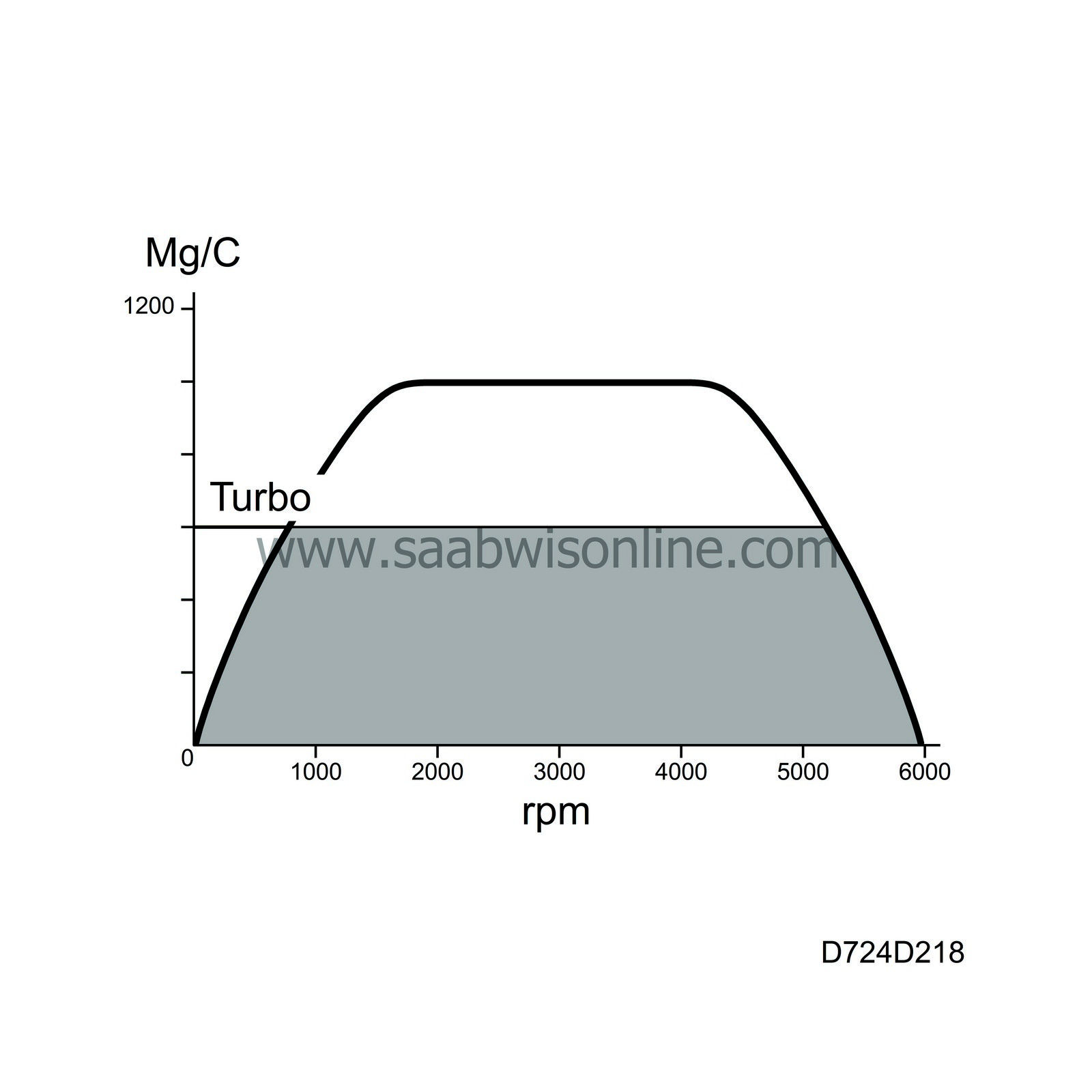Air mass limitation
| Air mass limitation |
| Maximum engine torque |
The engine torque curve is stored in the control module memory. It specifies the maximum engine torque at various engine speeds.
Engine torque is directly proportional to air mass/combustion.
The unit in the engine torque curve, Nm, is converted to mg air/combustion.
The value taken from the curve is the maximum air mass/combustion value the engine variant allows.
| Manual gearbox, engine torque limitation |

The maximum engine torque must be limited at low gear ratios for reasons of strength.
The control module calculates the engaged gear by comparing engine speed with vehicle speed.
If the gear ratio corresponds with gear 1 or R, the control module reads bus information "Reverse gear selected" from DICE to distinguish between them.
Engine torque is limited to 250 Nm (230 Nm for convertible) when 1st gear is engaged. Torque limitation 230 Nm is applied when reverse gear R is engaged. Torque is limited to 330 Nm (315 Nm for convertible) in 2nd gear. Other gears are limited to 350 Nm. This is to avoid vibration. Engine torque is converted to mg air/combustion and constitutes the maximum air mass/combustion the gearbox allows.
| Automatic gearbox, stall limitation |

The maximum engine torque must be limited when the car is stationary and the brake pedal is depressed for reasons of strength.
Engine torque is limited to 200 Nm.
Engine torque is converted to mg air/combustion and constitutes the maximum air mass/combustion permitted by the automatic transmission.
| Automatic transmission, limitation in reverse gear |

An engine-dependent torque limitation takes place when selector lever position R is selected to reduce the load on the powertrain mountings.
Engine torque is converted to mg air/combustion and constitutes the maximum air mass/combustion permitted by the automatic transmission.
| TCM, engine torque limitation |

The maximum engine torque must be limited while changing gear for reasons of strength. TCM sends continuous bus information indicating the maximum engine torque.
Trionic T7 converts Nm to mg air/combustion. The value constitutes the maximum air mass/combustion permitted by the automatic transmission.
| Braking |

The maximum engine torque must be limited when the brake pedal is depressed for reasons of strength. The following three conditions must be fulfilled for this function to be activated:
| • |
B+ on the input from brake light switch, pin 63.
|
|
| • |
B+ on the input from brake and clutch pedal switches, pin 29.
|
|
| • |
Brake light ON (Bus from TWICE)
|
|
Engine torque is limited to 200 Nm.
Engine torque is converted to mg air/combustion and constitutes the maximum air mass/combustion permitted by the automatic transmission.
| Knock limitation |

Knock control first retards the ignition timing for each cylinder. If the mean value for the ignition retardation for all the cylinder exceeds a certain value, fuel enrichment will take place.
If the mean value for ignition retardation increases further, the maximum permissible air mass/combustion will be reduced.
This reduction takes place continuously as the ignition retardation increases.
The value constitutes the maximum air mass/combustion value permitted by knock control.
| Vehicle speed limitation |

When the vehicle speed reaches 250 km/h, the engine torque will be limited by limiting the maximum permissible air mass/combustion.
| Engine speed limitation |

When the engine speed reaches 6000 rpm, the engine torque is limited by limiting the maximum permissible air mass/combustion.
| Turbo speed limitation |

The maximum permissible air mass/combustion is limited at low atmospheric pressures to protect the turbo from overrevving.
| Limitations after system faults |

The maximum permissible air mass per combustion is limited in the following cases:
| • |
Electrical fault in the charge air control valve.
|
|
| • |
Mechanical fault in the charge air control valve causing the current air mass to exceed that requested.
|
|



